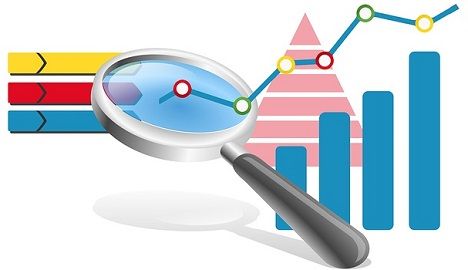How to buy on margin: Buying On Margin Definition, Example, Types
Because $1,600 out of $6,600 in only 24%, your equity is below the margin maintenance requirement of 25%. And all of the marginable assets in your account act as collateral against the money you borrow. Whenever you sell stocks, the proceeds go toward repaying your margin first. If your assets lose too much value, you may be issued a margin call and would need to either deposit more money or sell some assets to bring your portfolio value above the margin maintenance requirement. If you do not act quickly enough, your broker will sell your assets for you. Buying on margin involves borrowing money from a broker to purchase stock.
Almost every investor is tempted by the idea of accelerating their returns. Investors seeking to profit from a market downturn or looking for portfolio protection have several shorting alternatives. Be prepared for the possibility of a margin call—have other financial resources in place or predetermine which portion of your portfolio you would sell.
Trading on margin enables you to leverage securities you already own to purchase additional securities, sell securities short, or access a line of credit. While there are many benefits to establishing a margin account, it’s also critical to fully understand the risks before you get started. Before discussing the risks, let’s first examine the primary benefits of using margin. But by using the margin in your account, you doubled your purchase to 200 shares. As a result, you made another $2,000 in unrealized gains off the borrowed money. In this case, when you sell your 200 shares at $70 apiece, you collect $14,000 of market value.
His work has been cited by CNBC, the Washington Post, The New York Times and more. INVESTMENT BANKING RESOURCESLearn the foundation of Investment banking, financial modeling, valuations and more. The former involves the normal process of buying first and selling later whereas in the latter, there is selling first and buying later. Individual brokers may require a greater margin from their clients than those specified by the exchange.
For most individual investors primarily focused on stocks and bonds, buying on margin introduces an unnecessary level of risk. If your account falls below the maintenance margin, your broker can sell some or all of your portfolio to get your account back in balance. “If you’re in front of your terminal every day, you have strict loss limits and you have a trader mentality, margin investing can be a great thing in up markets. But investors should only do it when the market is going to keep going up and have very strict loss limits,” says Watts. Buying on Margin is an investment strategy where an investor purchases an asset, such as a stock, home, or financial instrument, by making a small down payment.
The ability to participate in advanced options strategies
This decline in stock prices led to widespread bankruptcies, bank failures, and a general economic downturn that became known as the Great Depression. Buying on Margin allowed investors to purchase stocks with borrowed money, increasing the demand for stocks and increasing stock prices. However, when stock prices started to fall, investors had to sell their stocks to repay their loans, leading to a stock market crash. So, buying on margin is borrowing money to make purchases, using the assets as collateral, then repaying the money plus any interest. Short selling is borrowing and then selling a stock, using a portion of the cash proceeds as collateral, then replacing that same stock — hopefully at a lower price.
But if mortgages worked like margin loans, that’s exactly the kind of scenario that a homeowner would face. The scoring formula for online brokers and robo-advisors takes into account over 15 factors, including account fees and minimums, investment choices, customer support and mobile app capabilities. Although margin loans have some things in common with traditional loans, the devil — and danger — is in the differences. How to Invest in ETFs Exchange-traded funds let an investor buy lots of stocks and bonds at once.
Initial Margin
This information is not a recommendation to buy, hold, or sell an investment or financial product, or take any action. This information is neither individualized nor a research report, and must not serve as the basis for any investment decision. All investments involve risk, including the possible loss of capital. Past performance does not guarantee future results or returns. Before making decisions with legal, tax, or accounting effects, you should consult appropriate professionals.
Nor will the lender force you to sell your house, or if you won’t do that, possess your car and sell it for cash. With a traditional loan , the value of the asset purchased with borrowed money has no bearing on the terms of the loan once the paperwork is signed. US resident opens a new IBKR Pro individual or joint account receives 0.25% rate reduction on margin loans. NerdWallet, Inc. is an independent publisher and comparison service, not an investment advisor. Its articles, interactive tools and other content are provided to you for free, as self-help tools and for informational purposes only. NerdWallet does not and cannot guarantee the accuracy or applicability of any information in regard to your individual circumstances.
She decides to use that cash to pay for half and she buys the other 100 shares on margin by borrowing $3,000 from her brokerage firm, for a total initial investment of $6,000. In order to buy an individual stock, the margin requirement is 50%, meaning if you want to buy $10,000 of a stock, you have to put in $5,000 in equity. Like a secured loan, a margin loan requires the investor to provide collateral, which acts like a security deposit. The value of the assets held in an investor’s account — including cash and any investments such as stocks and mutual funds — serve as collateral for the loan. At a minimum, most brokers require investors to maintain $2,000 in their account to borrow on margin. In a margin account, you can borrow from the brokerage based on How much you have invested.
The main disadvantage of buying an asset on a margin is that losses may also magnify. Let’s assume that you plan to sell your entire position of $6,600. Let’s assume that you held on to your shares for 100 days like in the example above, so the total interest is $146 as well. Assuming no other transaction costs, that leaves you with up to $1,600 of your initial investment.
Now, consider that instead of doubling after a year, the share price falls by half to $50. Since this equals the amount owed to the broker, the investor loses 100% of their investment. If the investor had not used margin for their initial investment, the investor would still have lost money, but they would only have lost 50% of their investment—$2,500 instead of $5,000. Day trades and spread transactions often give rise to margin requirements.
Related investing topics
If the investor does not comply, the broker may liquidate the investor’s collateral to restore the maintenance margin. Besides using a margin loan to buy more stock than investors have cash for in a brokerage account, there are other advantages. For instance, margin accounts offer faster and easier liquidity. In addition, the equity in your account has to maintain a certain value, called the maintenance margin. For example, let’s say you buy 2,000 shares of XYZ company with $10,000 of your own cash plus $10,000 in your margin account at a cost of $10 a share.
You buy 100 shares at $40, return the 100 shares of stock to your brokerage firm, and pocket the difference of $1,000 . This is another example of How trading on margin can provide opportunities to leverage your assets for financial gain. The maintenance margin is like a debt covenant for leveraged firms. If a broker sets this margin to 30%, for example, on an account valued at $10,000, then the investor must maintain at least $3,000 in margins. Once you’ve purchased a stock or security on margin, you’re required to keep a minimum amount of equity in your margin account. Equity is the market value of the securities in the account minus the margin loan amount.
Market Downturn: Three Ways to Short the Market
Please assess your financial circumstances and risk tolerance before trading on margin. If the market value of the securities in your margin account declines, you may be required to deposit more money or securities in order to maintain your line of credit. If you are unable to do so, Fidelity may be required to sell all or a portion of your pledged assets.
Your brokerage firm may close out positions in your portfolio and isn’t required to consult you first. That could mean locking in losses and still having to repay the money you borrowed. Margin interest rates are typically lower than those on credit cards and unsecured personal loans.
Margin trading is when investors borrow cash against their securities in order to make speculative trades. In a bullish market, margin trades can offer traders much higher returns than they could get by simply investing their available assets. The broker sets the minimum or initial margin and the maintenance margin that must exist in the account before the investor can begin buying on margin. The amount is based largely on the investor’s creditworthiness.
As we saw above, $5,000 in cash gives you buying power totaling $10,000—your existing cash, plus another $5,000 borrowed on margin from your brokerage firm—allowing you to buy 200 shares of that $50 stock. In the same way a bank can lend you money if you have equity in your house, your brokerage firm can lend you money against the value of the investments in your portfolio. The main benefit of margin trading is maximizing potential profit through the leverage provided by margin trading. In essence, the practice allows investors to increase their portfolio beyond the size of their real available funds.










